Theories confirmed by the director Duncan Jones
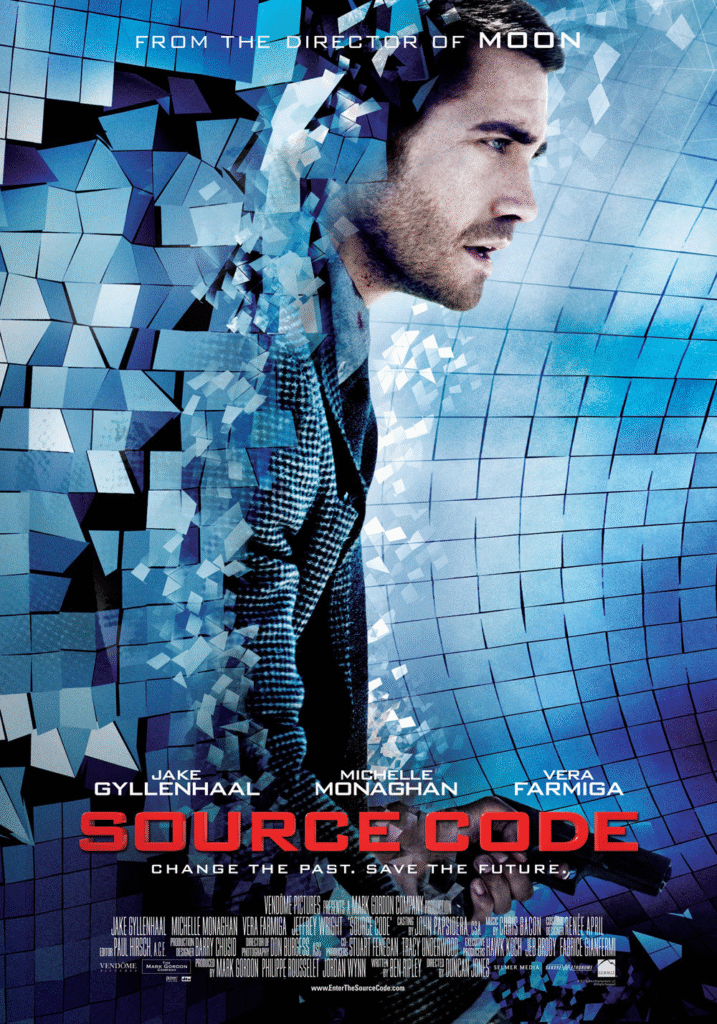
Summit EntertainmentWhat happens at the end of Source Code (2011)?
Short answer: Colter enters an alternate reality and lives on in this new world.
Now, if you want to get into the details of exactly what happens in the movie, how the Source Code and the alternate worlds work, and answer key questions like what happens to Sean, I’ll break everything down.
These aren’t just fan theories, it’s based on how the director explained the movie’s ending.
Before we begin:
- I recommend looking into parallel worlds/alternate realities if you don’t already know about the concept. In a nutshell, it’s a theory that there are multiple realities that may be quite similar or completely different than our own, or something in between.
- Because the technology in the movie is also named Source Code, it can get confusing, so I’ll refer to the movie name as ‘Source Code’ and the tech as SC.
The basic premise of Source Code
In the movie, someone has bombed a train, killing everyone on board.
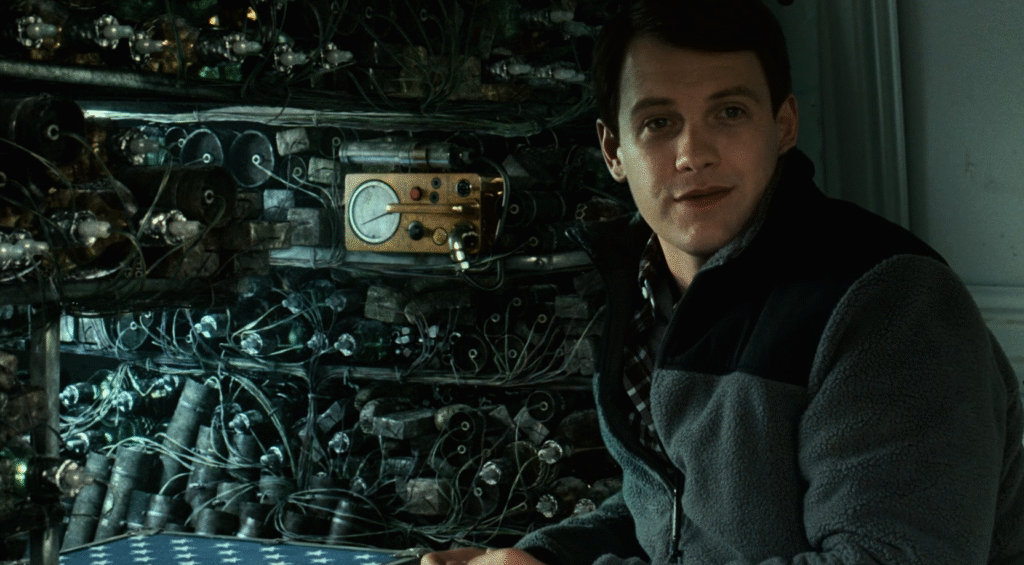
Colter, the main character, has to find out what happened, identify the attacker, and help stop future tragedies. But he won’t investigate this as a typical officer would. He’s sent into a ‘Source Code’ (SC) which is basically a simulation built from the memory of someone who died in this accident.
What is the Source Code?
Like you might see a little afterglow when you turn off a bulb, the movie says the human brain remains active for a bit when a person dies.
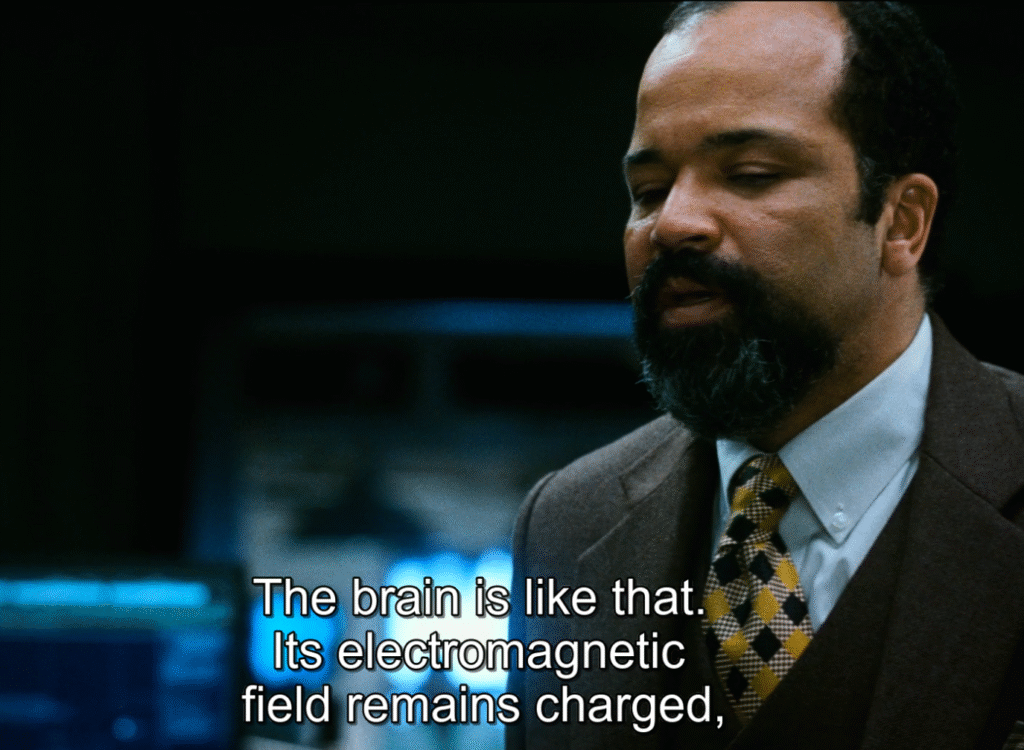

Using this, Dr. Rutledge and his team are able to access the last 8 minutes of a person’s memory. They build a simulation of these events and send another person into this VR-like scene to try and find out what really happened.
Colter seems to be the most suitable for this task due to having matching characteristics and brain with Sean, one of the victims of the train bombing.
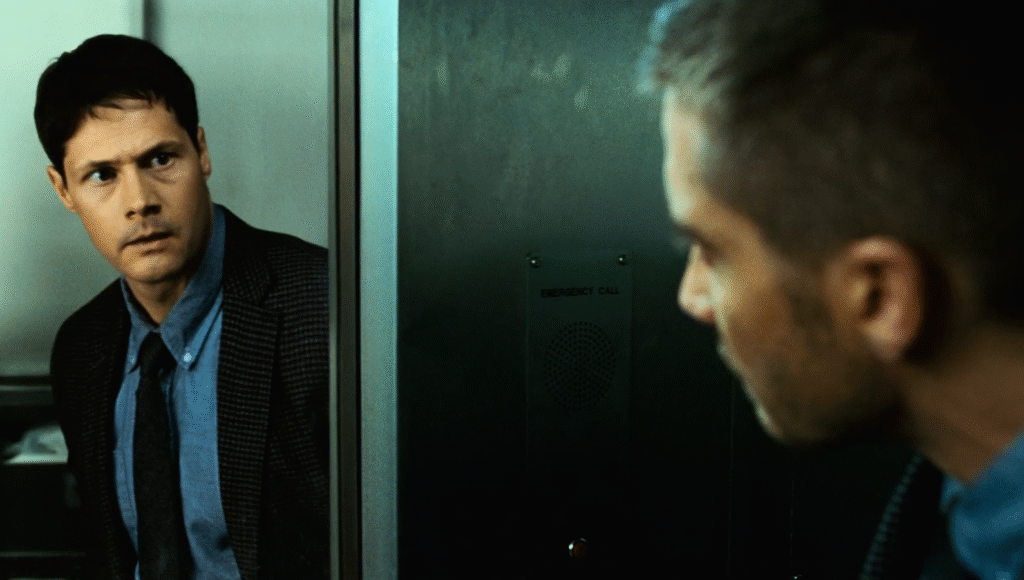
Who is Colter?
Colter is a military helicopter pilot killed in action in Afghanistan. His body is brought to a US military lab, where his remains are hooked to a computer system that generates the SC and lets him revisit Sean’s memories.
Source Code ending explained
Some terms to help you understand:
Original (OG) Colter: Helicopter pilot Colter Stevens (Jake Gyllenhaal), whose body is hooked to the SC.
OG world: The version where OG Colter’s body is kept hooked to the source code in the military base while his consciousness enters other worlds. It’s where Colter returns after the end of each 8-min simulation (except the last one).
N world: Throughout the movie, OG Colter enters multiple alternate worlds. We don’t know the exact number, so let’s call the final version (where events change) as the Nth world, or N world.
The part until the kiss freeze frame seems easy to understand. Colter enters a simulation, tries to extract information, and his uncovering of the attacker’s identity helps prevent future tragedies.

This is how the movie was supposed to end, according to the script writer Ben Ripley. But director Duncan Jones and and the lead actor Jake Gyllenhaal added the final scenes which indicate that the SC is much more than just a simulation.
This is the part that confused most of the audience because until now, it seemed like Colter is working in a digital recreation of a dead man’s final memories that only go up to 8 mins, and as the creators of the SC repeatedly tell him, nothing he does in the simulation can change what has already happened.
But when Colter enters the simulation for the last time, he not only stops the bomb from going off and killing everyone, he also continues “existing” past the 8 minutes and it’s implied that he goes on living.
This changes everything we’ve known about how the SC works so far. Now, we can look back and realize that all those times Colter entered the 8-minute simulations were actually an alternate reality.
It’s not just like a video replay that ends at the 8-minute mark. It’s a separate world that continues to exist. It starts off similar to the OG world, but can change based on people’s actions, like Colter stopping the bombing in one version and the bomber shooting Colter in another.
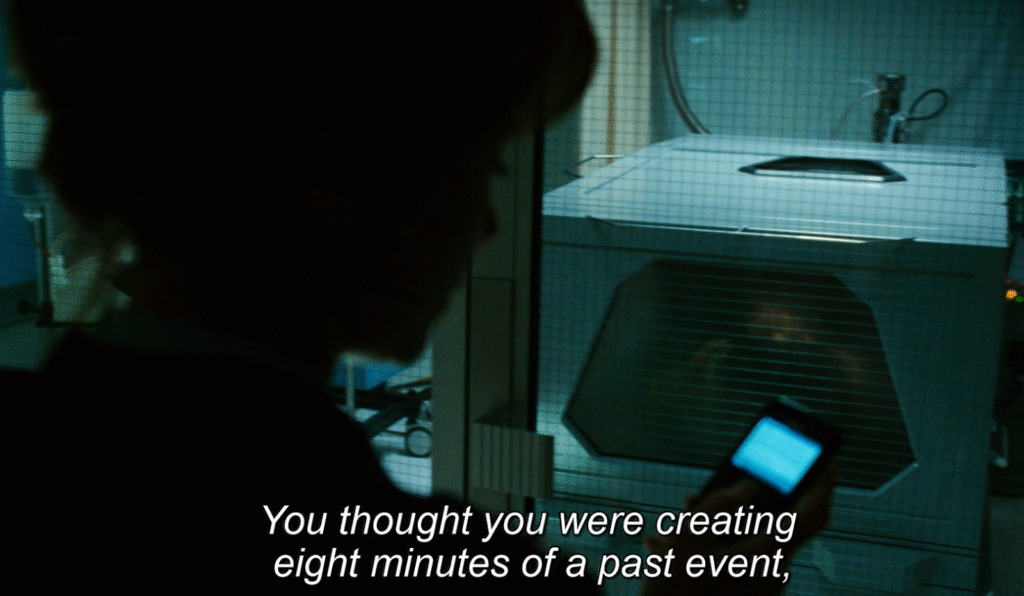

This is hinted earlier when Colter says he made a call from to the OG world from an alternate world, but Dr. Rutledge says it will never reach this world and would instead be received by another Dr. Rutledge living in the alternate reality.
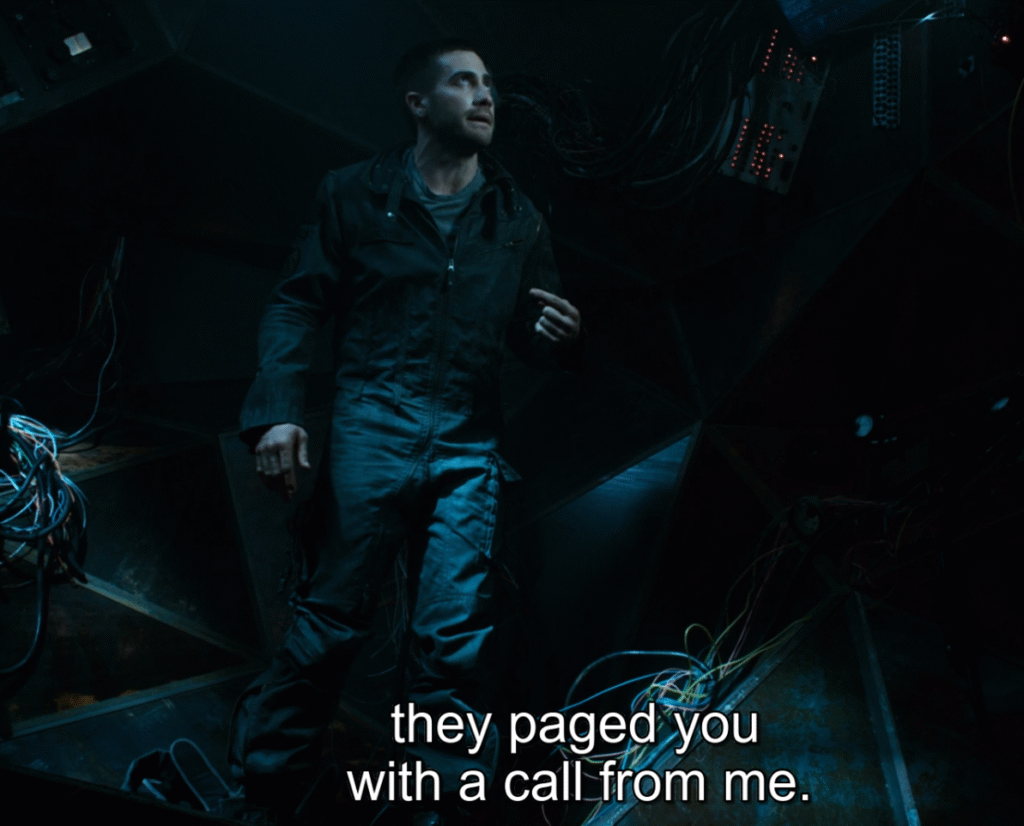

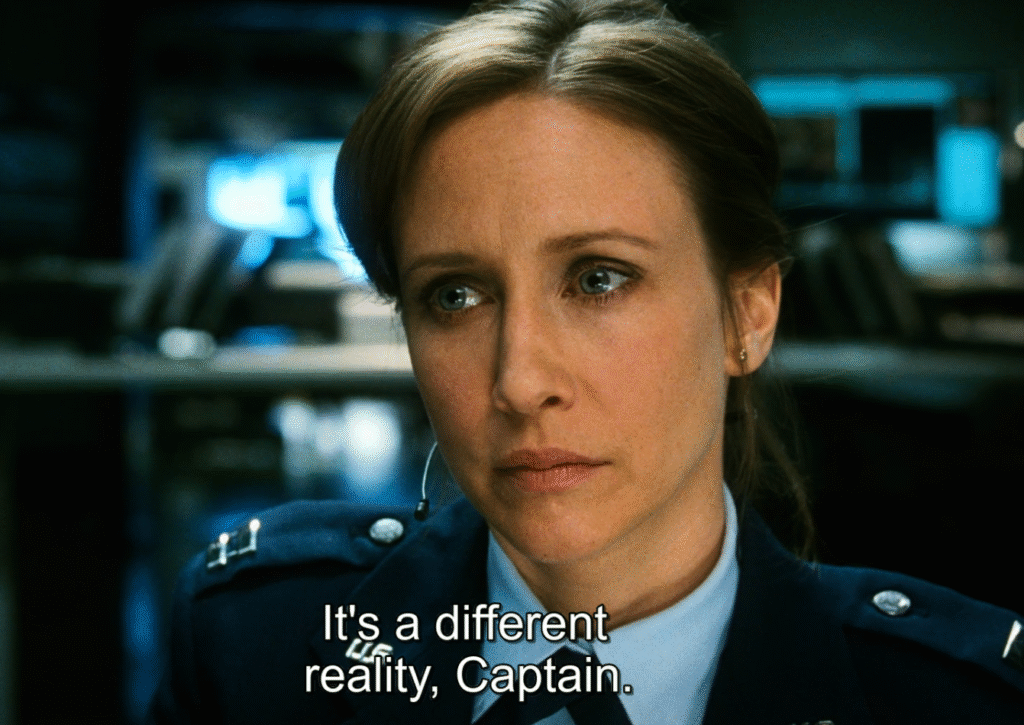
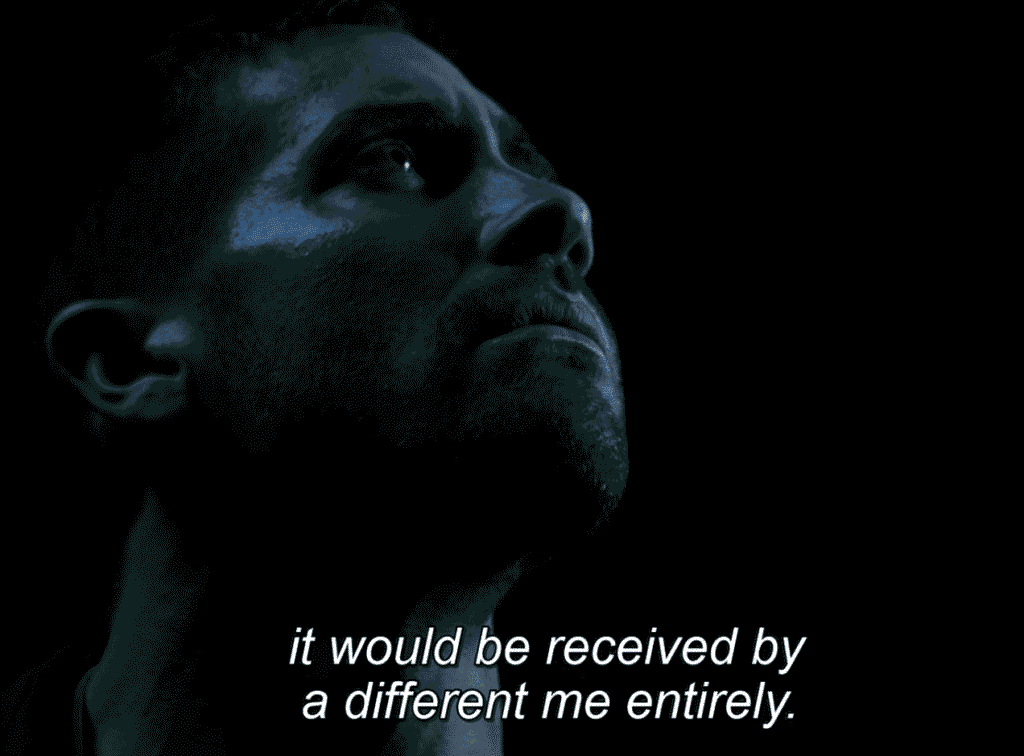
Think of it as the multiple universe concept explored by Marvel in recent projects like Doctor Strange in the Multiverse of Madness and Loki (Time Variance Authority or TVA).
So, here’s what really happens at the end of the Source Code:
OG Colter’s body is hooked in the military lab in the OG world. His consciousness enters Sean’s body in alternate worlds.
In the N world, Colter’s consciousness enters Sean’s body, stops the bombing, saves the people, and seems to go on living with the woman.
During the 8 minutes he has, he is shown sending an email to Goodwin, the military staff member who helps him enter the SC and stabilize once he’s back to the OG world.
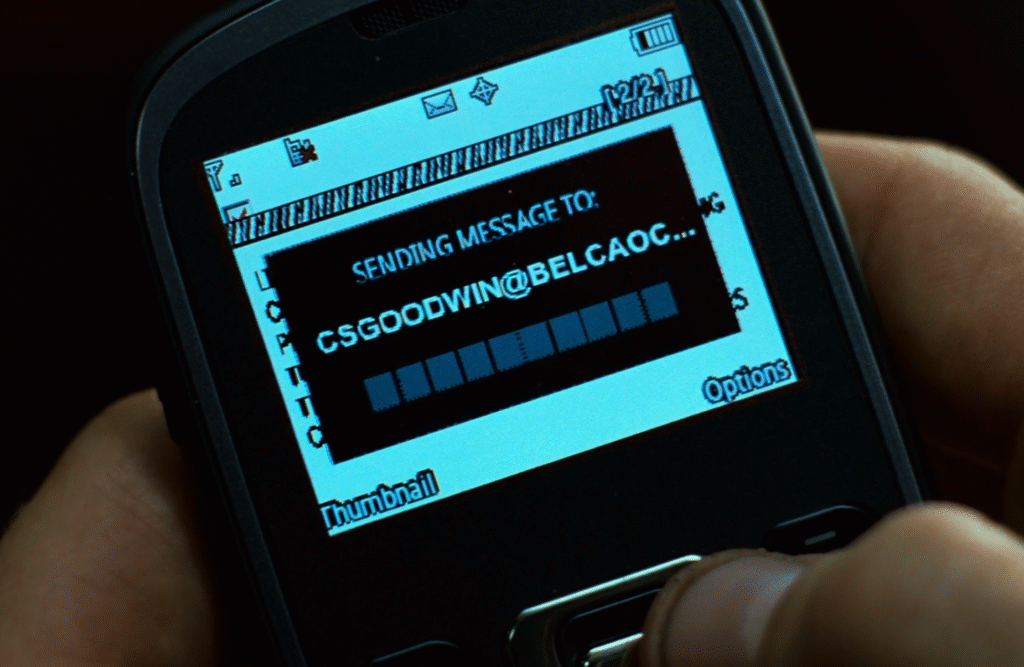
Now, here’s the confusing part, so let’s break it down world-by-world.
OG World
- Colter enters the SC, helps identify the bomber, the military captures the attacker, and future attacks are prevented. The military team celebrates.
- Colter requests Goodwin to send him back into the simulation one last time and then to kill him (end his life support), and she agrees after some reluctance.
- Once 8 mins in the simulation are over, Goodwin does as promised and “kills” Colter’s body against the orders of her superior.
- OG Colter’s body is dead. We stop following the events of this world.
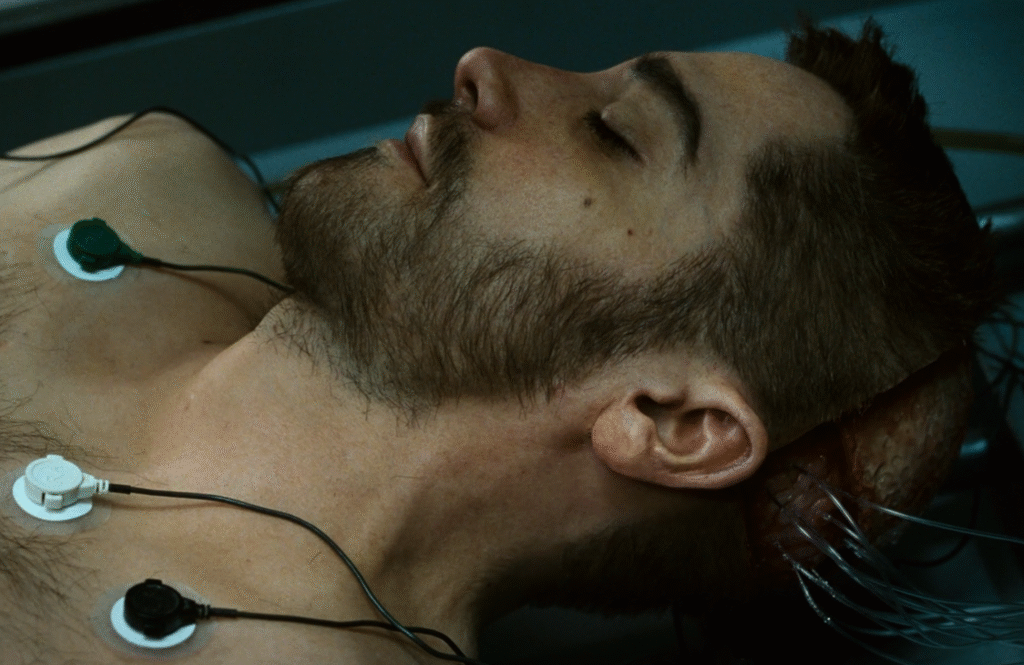
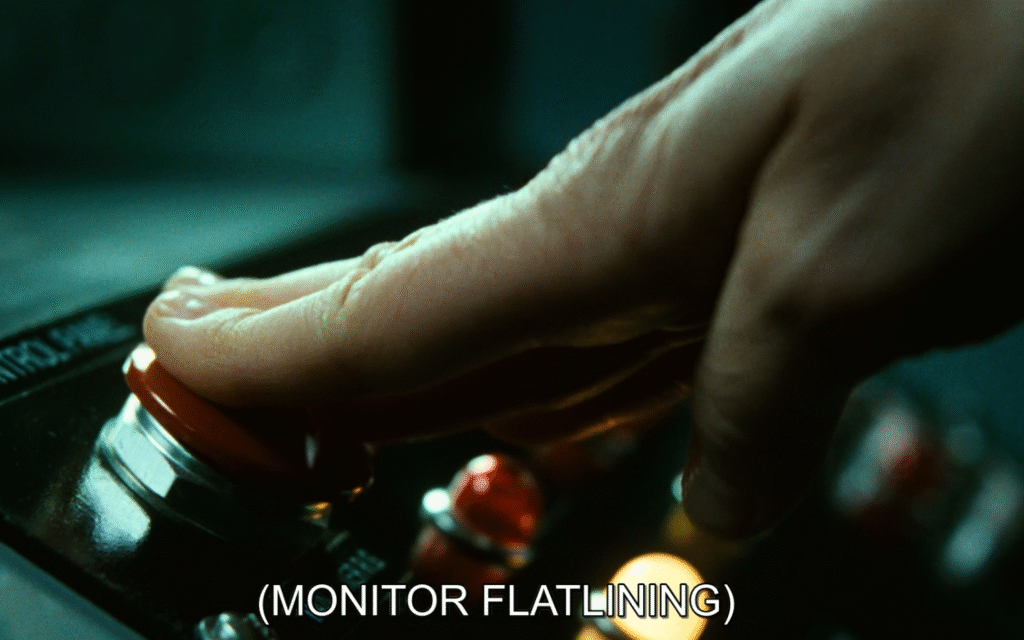
N World
In simple words: Everything that happens after the kiss is happening in another reality.
- OG Colter’s consciousness enters Sean’s body. He stops the bombing.
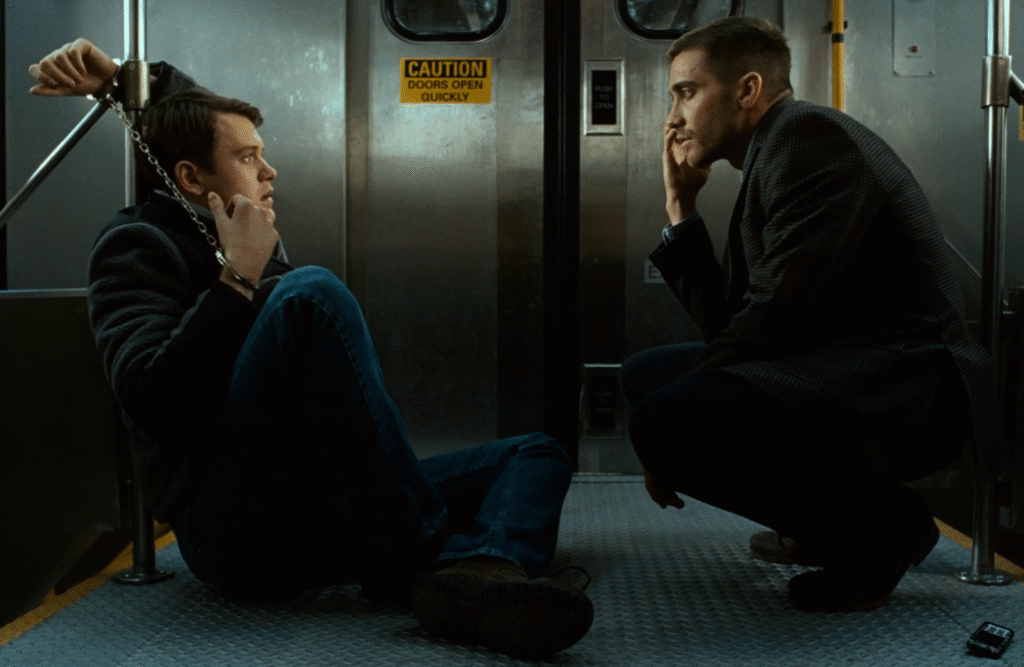
- Once 8 mins are over, he continues living in Sean’s body as the SC creates an alternate reality, not just a digital simulation that ends after the specified time. This time, he didn’t die in the bombing, got run over by a train, or shot, so he continues “living.”
- Because the bombing never happened in this world, the Colter in this reality (the pilot’s body, which is in the military lab), is never sent into the SC, so the N world Colter is still in the lab.
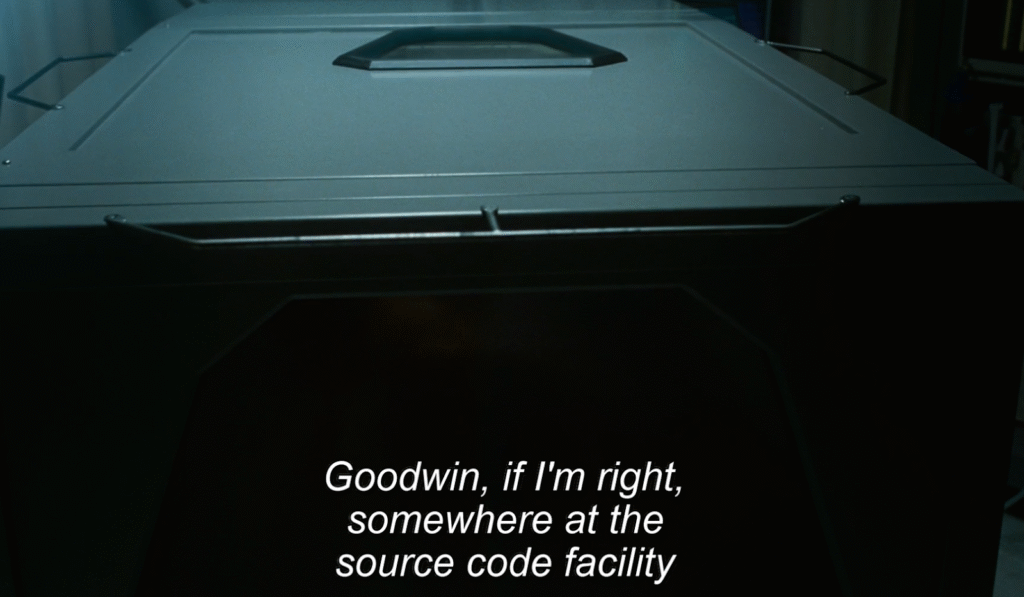
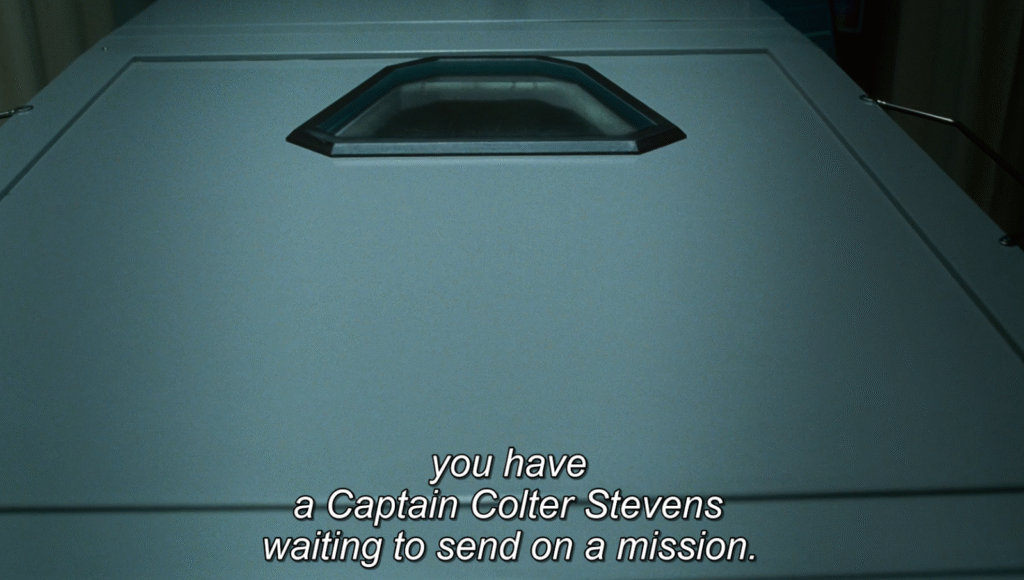
- The OG world’s Colter in N world’s Sean body sends a text to the N world’s Goodwin. This Goodwin and her team have never sent their world’s Colter in the SC and just received proof and further info about how the SC works. So, in a way, this world’s Colter is still “alive” in that his consciousness can be sent for SC missions.

- There are two Colters in this world now. One, the OG world’s Colter in N world Sean’s body. Two, the Colter of N world who died in Afghanistan and is brought to the US for SC missions.
The director confirmed this himself:
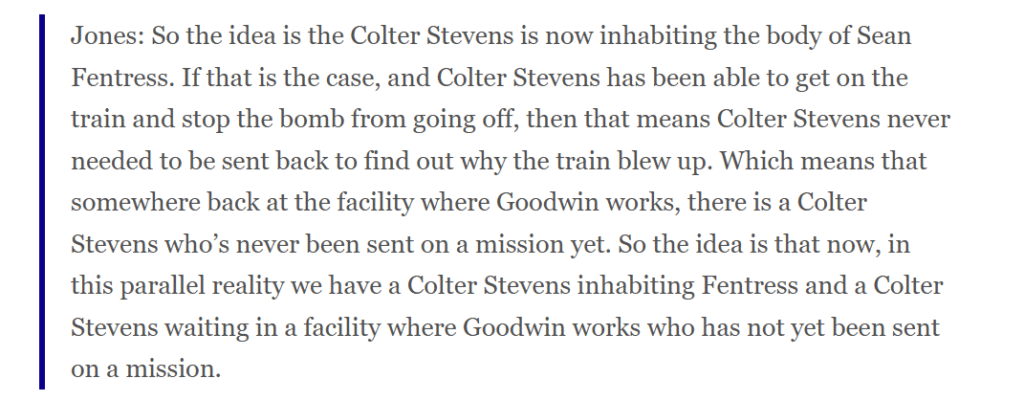
Jones: So the idea is the Colter Stevens is now inhabiting the body of Sean Fentress. If that is the case, and Colter Stevens has been able to get on the train and stop the bomb from going off, then that means Colter Stevens never needed to be sent back to find out why the train blew up. Which means that somewhere back at the facility where Goodwin works, there is a Colter Stevens who’s never been sent on a mission yet. So the idea is that now, in this parallel reality we have a Colter Stevens inhabiting Fentress and a Colter Stevens waiting in a facility where Goodwin works who has not yet been sent on a mission.
What happened to Sean?
Okay, we finally figured out what’s happening with all the Colters and alternate realities. But what happens to Sean, whose body is taken over by Colter in every reality? Did he just cease to exist?
Yes!
He’s dead. He just can’t exist with the OG world Colter inhabiting his body.

In the OG world, Sean died in the train bombing. In all other worlds created by the SC simulations, Sean simply doesn’t exist because these worlds begin with OG Colter taking over Sean’s body. So instead of saying Sean was wiped from existence, we can say he never really existed in any of these parallel worlds.
Does Source Code have a happy ending?
At first glance, Source Code seems to have a happy ending. Colter saves people, appreciates the gift of life, and goes on to live happily with a beautiful woman. But is this really as happy an ending as it seems?
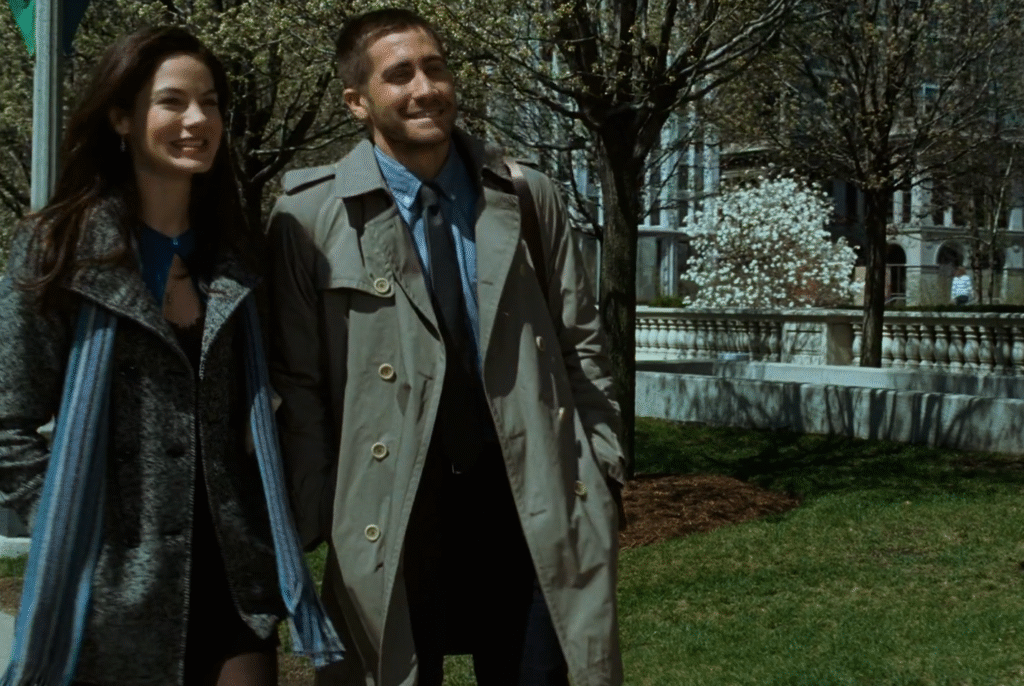
The director intends us to question this. He said, “…Sean Fentress is now dead although he shouldn’t be… Colter has basically forfeited Sean Fentress’ life just so he, Colter Stevens, can have a happy ending. I like that, because immediately although we have a happy ending, it’s ethically a little bit more ambiguous.”
If you consider it’s just a cost of one life for saving many more, there’s a bigger problem. If we assume every time Colter enters a simulation, it’s actually creating an alternate world that continues on after the 8-min mark, it means every time the bombing happens in the alternate worlds, all those people (and not just simulations) are dying.
This doesn’t seem like a problem if we believe it’s just a digital recreation of memories, a replay of what has already happened. But as the end of the movie shows, it’s some variation of an actual world where actions do have an impact on what happens and things can shape up differently from the OG world. This means the bombings we saw happen so many times as Colter was figuring things out, also had consequences over and over.
In the end, how many people in how many different worlds died?
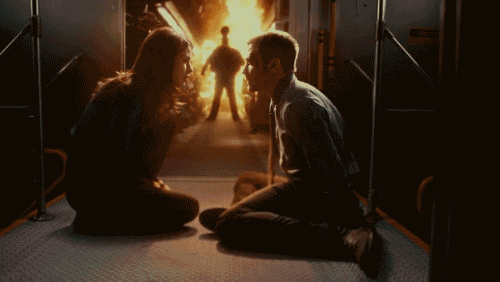
One way out of this—just something I came up with, not the director’s words—is thinking of all these versions of alternate worlds as somewhat duplicate. The OG world is real and one that matters the most. The other worlds are copies that can deviate from the original but are still just copies that can’t really affect the original one.
It’s like editing a copied file. It is a file, just like the original one. You can have multiple copies, make changes to them, and even delete them entirely, but they’re all just copies. They can’t become or affect the original files in any way.
So you can think of the other worlds as disposable, created just to experiment and see what happens. The changes you make and the effects you see in the copied worlds can be used to influence the future of the OG world but they can’t replace what has already happened.
Fan theory
While the aforementioned explanation was confirmed by the director, some viewers came up with other theories that also seem plausible.
As Colter is working on the SC mission, we’re shown that his severed body is kept in a coffin-like box. But that’s not how he sees himself. His mind makes up his lost limbs and some sort of space capsule where he seems trapped. He even imagines a crisis where the power shuts down, he’s freezing to death, and eventually saves himself. It’s all in his head!
Now, some viewers suggested that the final moments of the film, where he saves everyone and gets a happy ending, are just fragments of his imagination as his life support is turned off. As explained earlier in the film, the brain lives on for a few mins after death and perhaps this happy ending is part of Colter’s “afterglow.”
Existential questions
One of the reasons I enjoy watching movies like this is that they invite discussions on existential themes like:
- What does it mean to be alive?
If Colter’s body is dead and his consciousness lives on in someone else’s body, would you say he’s living? What if it’s the reverse, what if somebody else’s mind occupies your body? Who is really living that life? - Do alternate realities exist?
Scientists have been looking into this and there’s no conclusive answer. We have theories but no valid evidence. Some people report feeling like they “jumped across timelines.” How is it different from saying someone “saw God/Devil?”
The movie prompted me to explore some of these ideas deeper and it’s mind-blowing the deeper you go. - What is real? Are we living in a simulation?
What Colter experiences as real (his limbs, the capsule) are things conjured up in his head. If he wasn’t told it’s his imagination, would he ever doubt it? Would it ever make those experiences less real?
How do you know what you’re experiencing is real? There are communities dedicated to proving that we’re living in a simulation. That’s not what I’m talking about. I’m exploring the basic concept of what even is reality in the first place.
If we experience the world through our perceptions, which have repeatedly been shown to be biased, how accurate is the world you experience? Aren’t most of the things we experience just in our heads?
If your brain is hooked to a machine that simulates all these experiences for you, would your thoughts, feelings, and ideas no longer be real?
When you’re watching a horror movie, is the terror you feel fake? Even if there’s nothing actually in front of you, does your body not show real physiological responses like pupil dilation, screaming, tightening of muscles, and so on? Are these experiences fake?
Nowadays, people are “falling in love” with AI. We can say their relationships are not real, but the emotions they experience, are they also not real?
There are no answers and that’s the fun part. We all get to explore what it means to live and the extent to which it is possible. Even if, at the end of it all, we find out that none of this is real—that it was all just a simulation—wouldn’t you say you still lived, whatever that might mean?
Disclaimer: The inclusion of copyrighted material is for transformative purposes such as review and critique under fair use guidelines, and remains the property of its original copyright holders.
If you’ve made it this far and enjoyed my work, consider supporting me to make more of it! It helps keep the creative cycle going.
You come across something that touches you and changes your life, so you create beautiful art reflecting that. It inspires someone else and the cycle of creativity continues. Be a part of it!

Leave a Reply